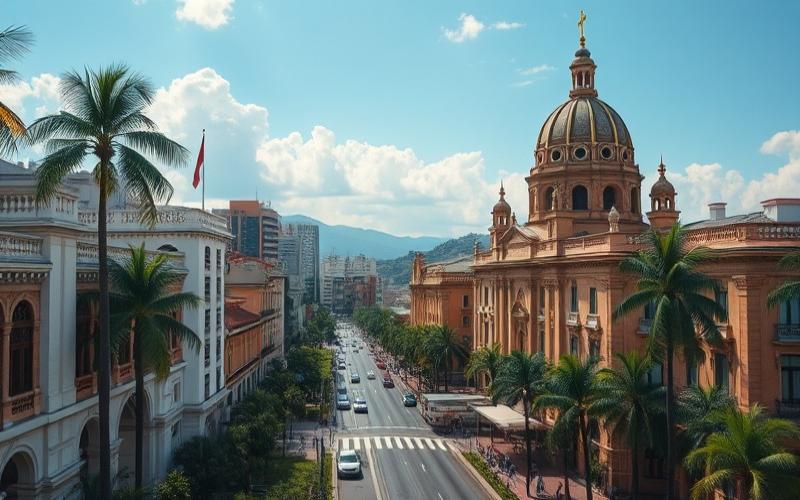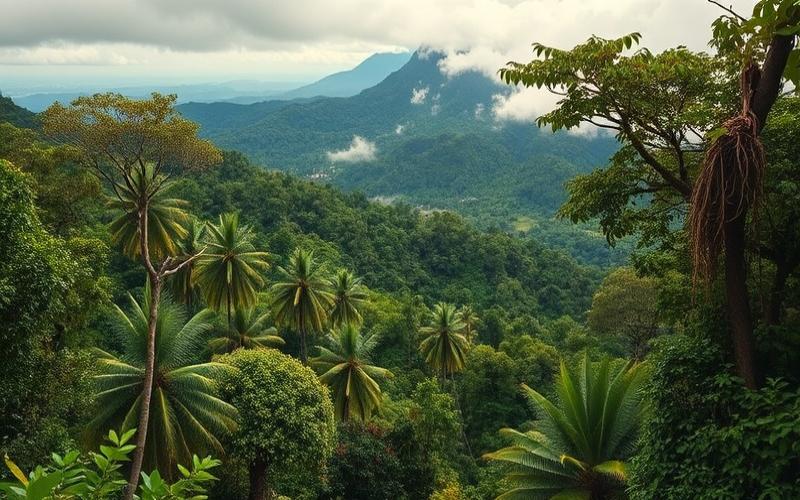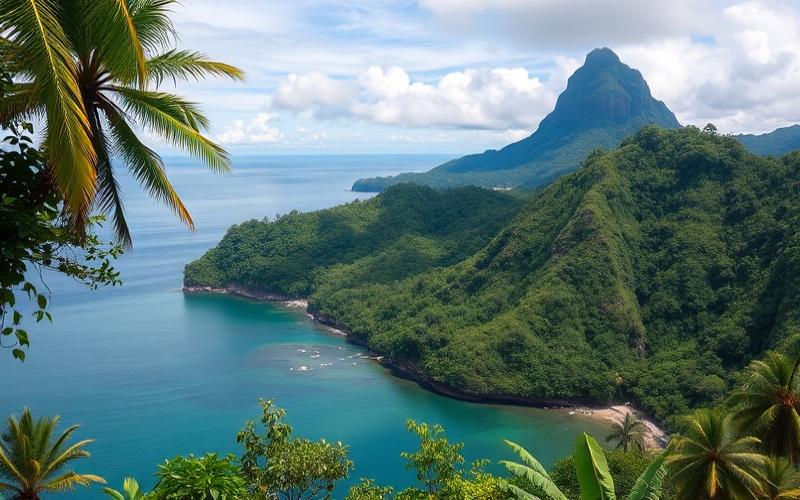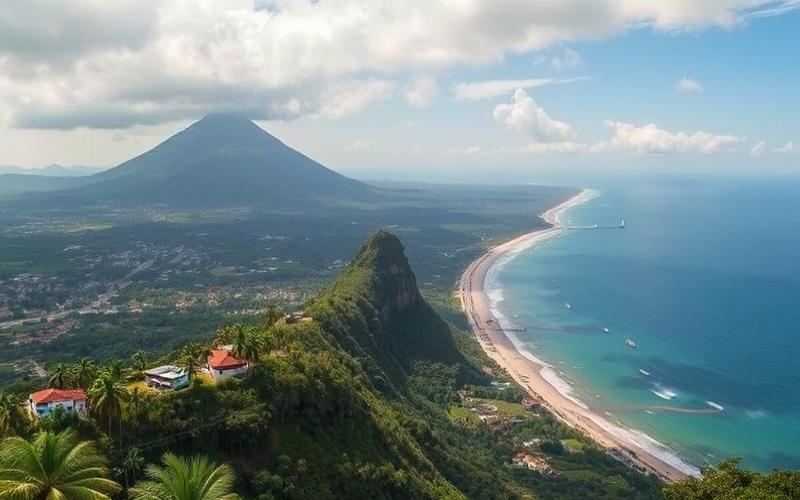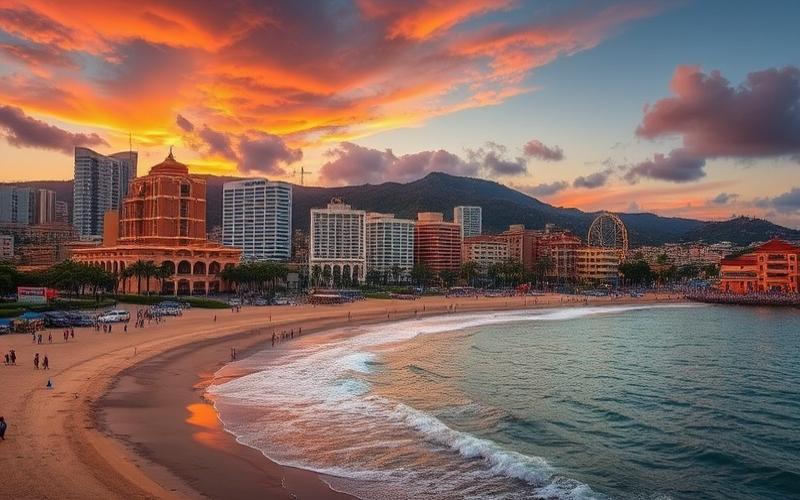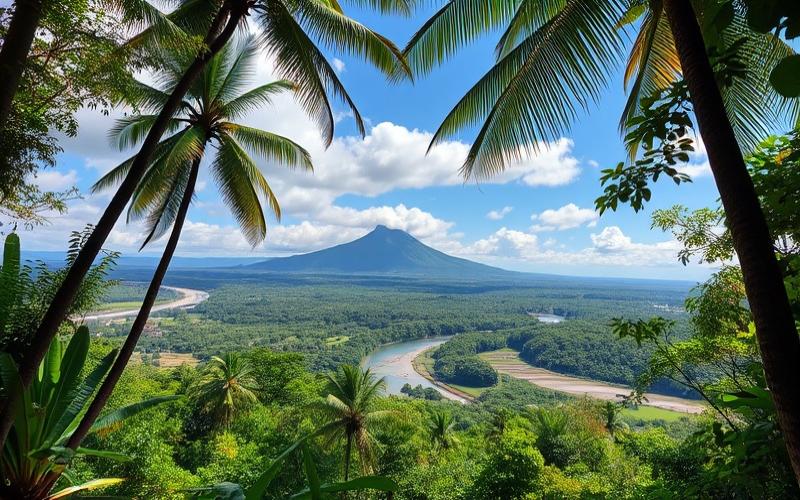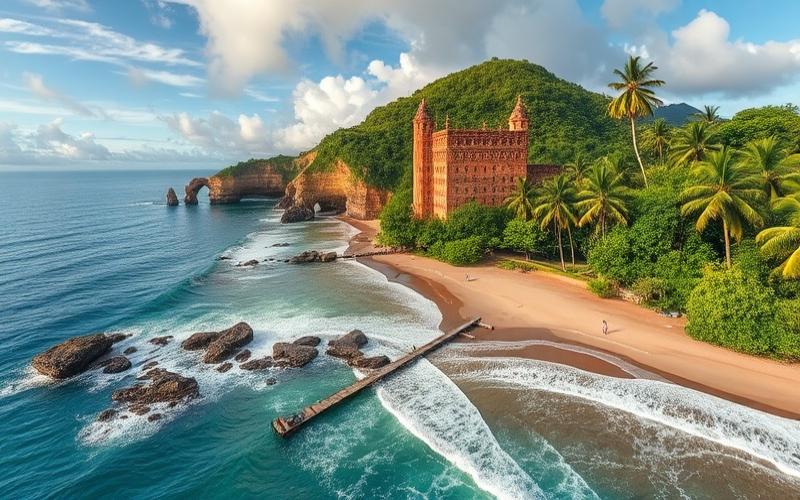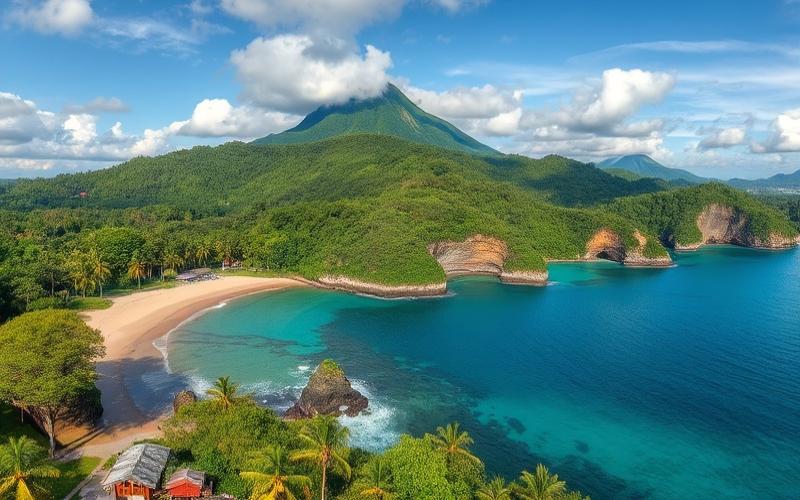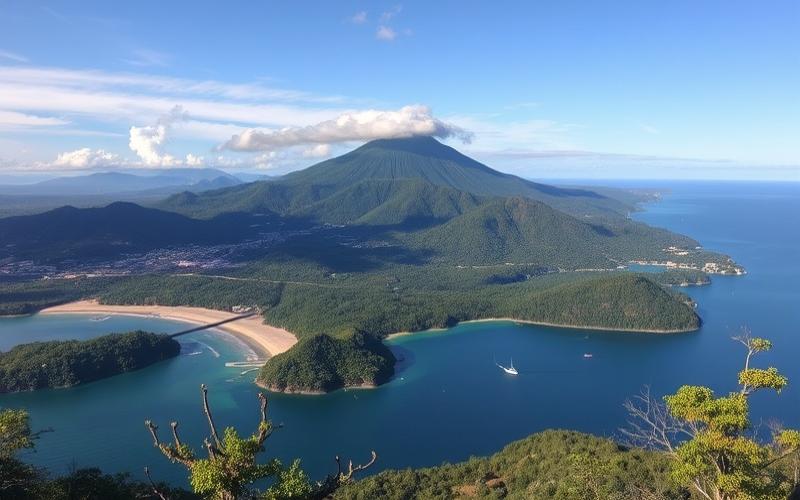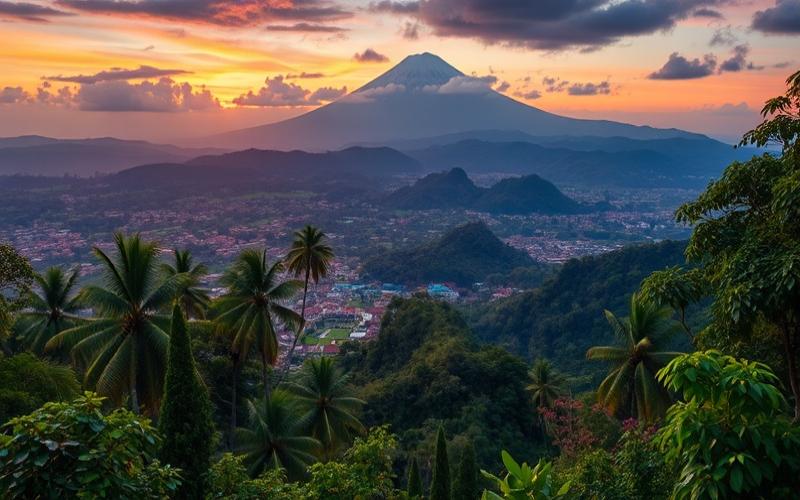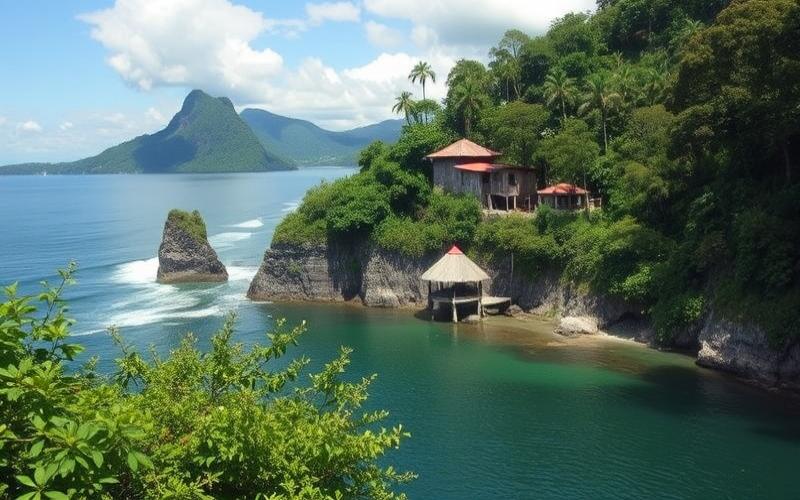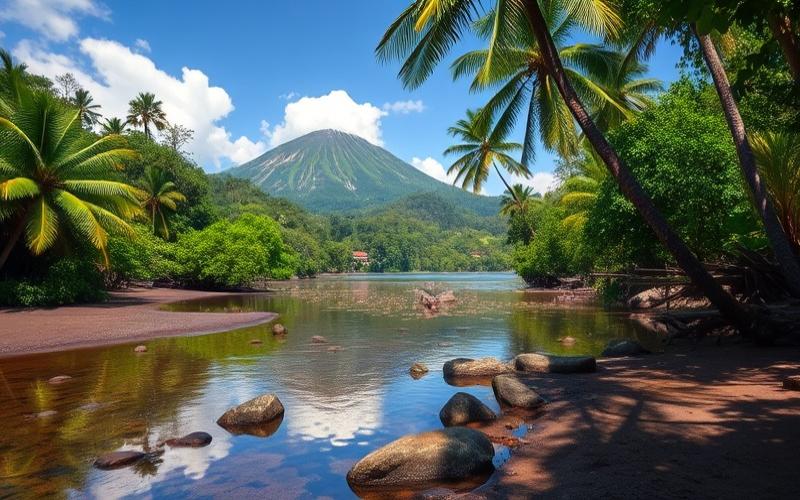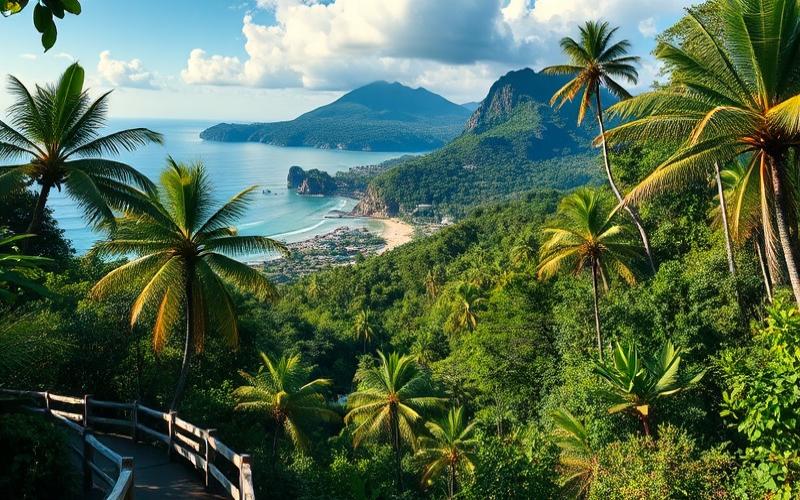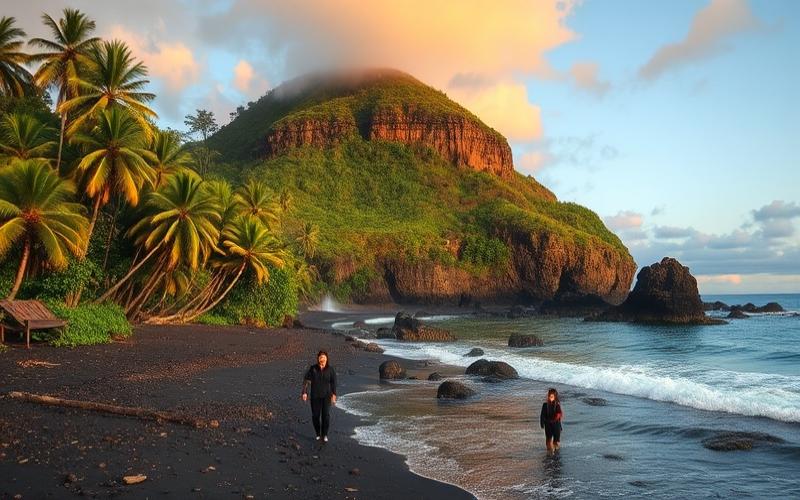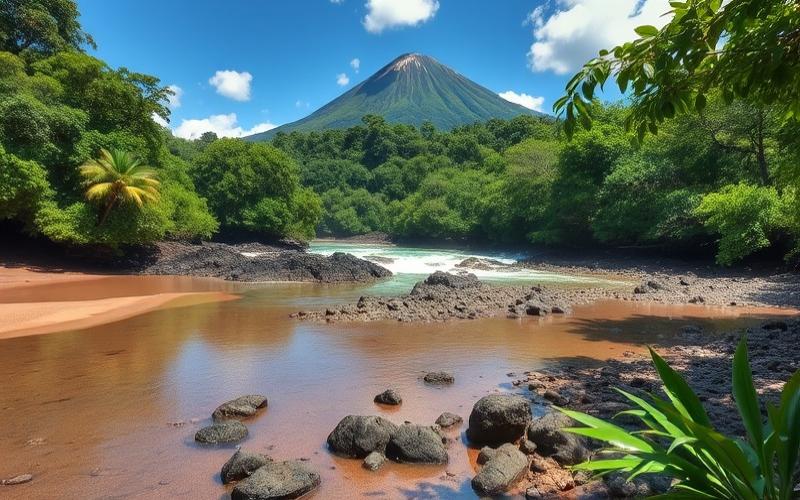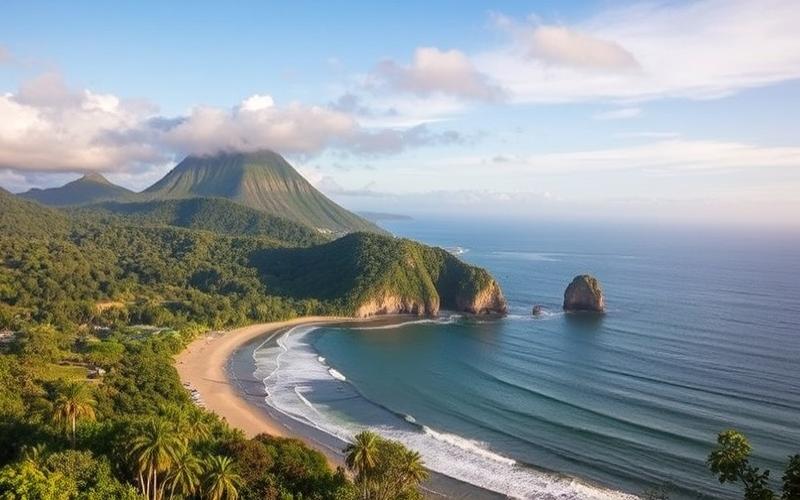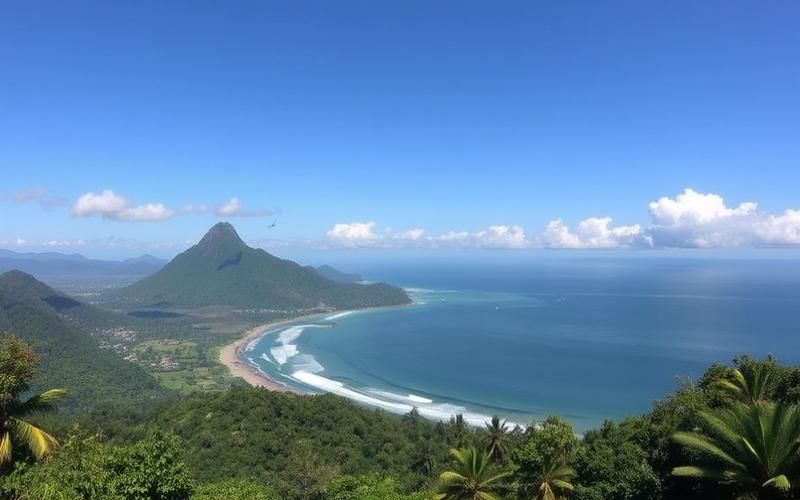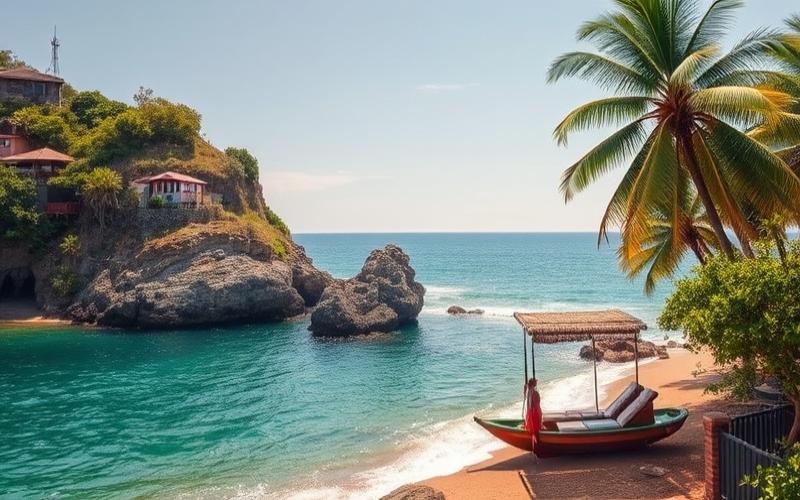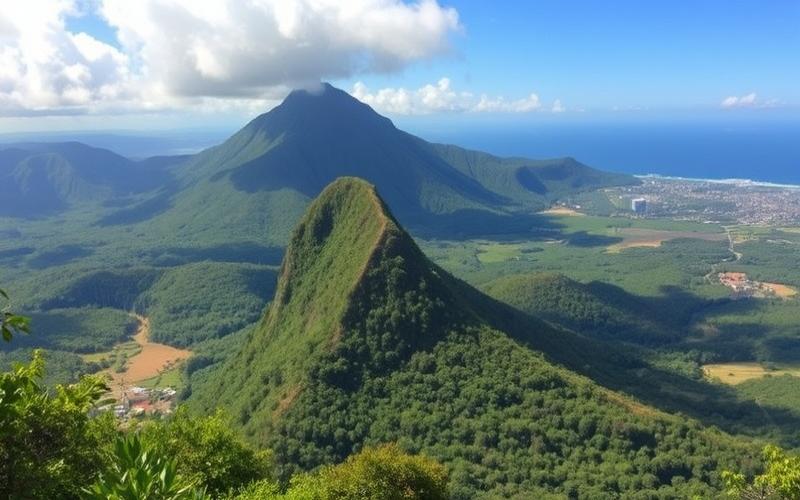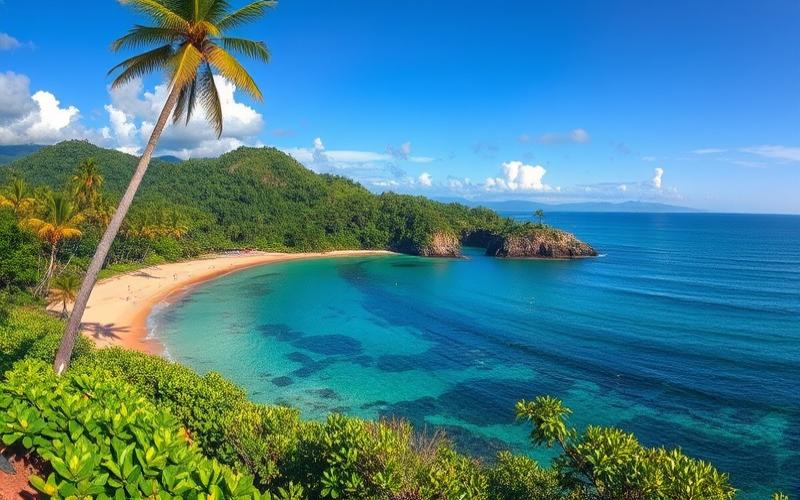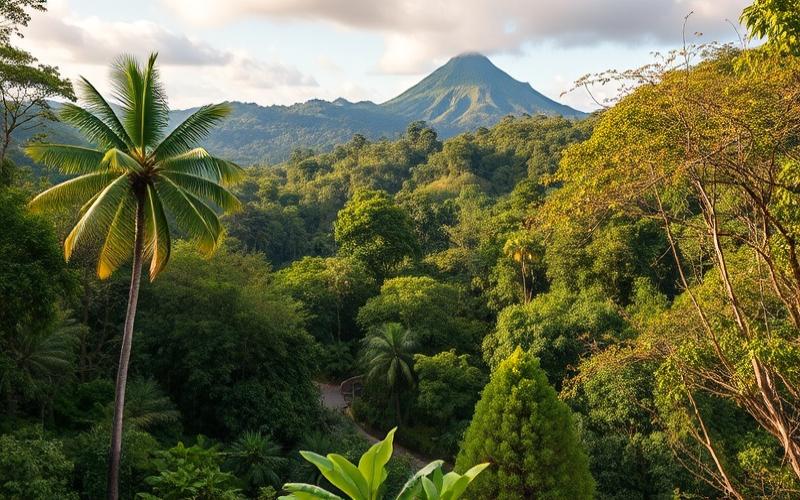
 Published on and written by Cyril Jarnias
Published on and written by Cyril Jarnias
Costa Rica: A Promising Market for Commercial Real Estate
Costa Rica, known for its exceptional biodiversity and political stability, proves to be a fertile market for commercial real estate investments. Attracting international investors seeking attractive returns, this Central American country combines a favorable tax environment with a rapidly expanding tourism sector.
This dynamism thus offers numerous opportunities in the following key sectors:
- Office Space
- Retail
- Hospitality
As infrastructure projects multiply and the local economy continues to grow, Costa Rica is establishing itself as a preferred destination for those looking to diversify their portfolios.
Good to Know:
Costa Rica offers unique advantages such as political stability, attractive taxation, and a rapidly growing tourism sector, making it a particularly interesting market for commercial real estate investors.
The Strengths of Commercial Real Estate in Costa Rica
The commercial real estate sector in Costa Rica attracts numerous investors thanks to a combination of favorable economic, political, and structural factors.
Key Attractiveness Factors:
- Favorable Economic Context
Costa Rica exhibits stable growth and an open economy, supported by a skilled workforce and expanding sectors like technology, shared services, and tourism. - Political Stability
The country is recognized for its stable democracy and the absence of a military, making it one of the safest business environments in Latin America. - Tax Incentives for Foreign Investors
Real estate capital gains are not taxed for up to three sales per year, and administrative procedures for foreigners are straightforward. Acquisition fees are limited, and the overall tax burden remains attractive. - Tourism Boom
Costa Rica welcomes millions of visitors annually, boosting demand for commercial spaces such as restaurants, hotels, shopping centers, and retail stores. - Diversity of Available Commercial Properties
- Modern Shopping Malls
- Office Spaces (including coworking and offices for tech companies)
- Food & Beverage Outlets (cafes, bars, restaurants)
- Hotels and Tourist Accommodations
- Industrial Spaces and Logistics Warehouses
- Geographic Accessibility and Role as a Regional Hub
Its central position in the Americas allows for easy connections to North America, South America, and Europe. The country has several international airports and modern ports, enhancing its logistical appeal. - Developing Infrastructure
Costa Rica is investing in improving its roads, telecommunications (fiber optics, 5G), and energy facilities, facilitating business and corporate establishment.
Summary Table of Advantages
| Strength | Description |
|---|---|
| Political Stability | Stable democracy, high security |
| Favorable Taxation | Untaxed capital gains, reduced fees, simplified procedures |
| Tourism Growth | Increased demand for retail, hotels, food & beverage |
| Diversity of Commercial Assets | Shopping malls, offices, food & beverage, hotels, warehouses |
| Regional Accessibility | Logistical hub between North America, South America, and Europe |
| Growing Infrastructure | Roads, ports, airports, modern telecommunications |
| Skilled Workforce | Competitive costs, high education level |
Recent Commercial Real Estate Market Trends:
- Growing demand for flexible spaces (coworking, modular offices).
- Development of establishments focused on experiential tourism (boutique hotels, concept restaurants).
- Expansion of shopping centers in tourist and upscale residential areas.
- Increased interest in hotel investments, particularly in Guanacaste and the Central Pacific.
- Rise of eco-friendly real estate projects, reflecting the country’s commitment to environmental sustainability.
Commercial real estate in Costa Rica thus offers a secure, profitable, and diversified environment, supported by an exceptionally stable macroeconomic and political context, tax benefits, and a promising tourism dynamic.
Good to Know:
Costa Rica stands out as an attractive destination for commercial real estate, thanks to a stable economy and favorable political climate that reassure investors. The government offers advantageous tax incentives for foreign investors, making the market even more appealing. With tourism booming, there is strong demand for commercial spaces such as shopping centers, modern offices, and food & beverage outlets. Thanks to its central geographic location, Costa Rica serves as a strategic hub in Central America, facilitating business accessibility. Furthermore, the country’s infrastructure is constantly improving, thereby supporting the growth of the real estate sector. Finally, current trends show growing interest in green and sustainable real estate projects, enhancing the appeal of the Costa Rican market for environmentally conscious investors.
Exploring Available Types of Commercial Properties
Types of Commercial Properties in Costa Rica
| Property Type | Typical Location | Main Characteristics | Benefits for Investors | Concrete Examples |
| Office Spaces | San José, Escazú, Heredia | Modern buildings, easy access, 24/7 security, parking, proximity to transport and services. | Constant demand in the capital and economic hubs; stable rents. | Office buildings at Avenida Escazú or Sabana. |
| Shopping Centers | Dense urban areas (San José), tourist zones (Jacó) | Modular spaces for retail or food & beverage; high foot traffic. | Diversified rental income; appreciation through footfall. | Multiplaza Escazú (upscale), Jacó Walk (tourist-oriented). |
| Industrial Properties | Alajuela, Cartago, outskirts of San José | Buildings adapted for production/logistics; large areas; access to main roads. | Proximity to airports/ports; tax incentives in free zones. | Industrial Parks near Alajuela or Cartago. |
| Warehouses | Near major roadways and ports (Caldera/Limón) | High ceilings; access for heavy trucks; enhanced security. | Strong logistics demand from e-commerce/import-export; stable yield. | Logistics warehouses at Coyol Free Zone (Alajuela). |
Specific Characteristics by Type
- Office Spaces
- Primarily located in urban centers.
- Often equipped with modern technological infrastructure.
- Attractive for multinational companies and start-ups.
- Shopping Centers
- Strategic location near affluent residential neighborhoods or tourist areas.
- Ability to host a variety of brands: retail, food court.
- Industrial Properties
- Close to logistics infrastructure: Juan Santamaría Airport or seaports.
- Adaptability to the needs of the manufacturing or agri-food sector.
- Warehouses
- Direct access to highways and national/international logistics hubs.
Recent Market Trends
- Significant increase in warehouse demand due to e-commerce development.
- Ongoing development of mixed-use spaces combining retail/offices/residential in Greater San José.
- Sustained growth around industrial free zones benefiting from attractive tax advantages.
Legal Aspects to Consider
Recommended Legal Structure:
- Investors typically choose a Sociedad Anónima (SA) – the local equivalent of a corporation – which protects personal assets from business creditors.
Specific Rules:
- Transfer/sale must comply with Article 79 of Law No. 7527 on Urban and Suburban Leases (Ley del Arrendamiento Urbano y Suburbano): formal obligations upon change of ownership and automatic transfer of lease rights/liabilities if premises are rented.
Particular Aspects During Acquisition:
- Strict cadastral verification to avoid any land disputes common in Central America.
- Notarial obligation for any significant commercial real estate transaction;
- Mandatory notification to the current tenant after sale if the property is occupied by a commercial third party;
- Recommended use of a local specialized attorney to navigate specific local regulations based on geographic area/type of activity;
Taxation Applicable to Commercial Real Estate Investments
Main Points:
- Annual property tax (~0.25% of fiscal value).
- VAT on rental/commercial income imposed since July 2019;
- Possibility of tax reduction through investment in industrial free zones/agro-industrial parks;
In summary, Costa Rica offers a wide variety of opportunities in commercial real estate thanks to its regional economic dynamism and policies favorable to foreign investors through adapted structures (SA/SRL) as well as its sector-specific tax incentives—particularly attractive around major industrial/logistics hubs like Coyol Free Zone or Caldera Port.
Good to Know:
In Costa Rica, commercial real estate investors can choose from various types of properties, each offering distinct advantages. Office spaces, often located in the business districts of San José, benefit from strong demand due to the expansion of companies and tech start-ups. Shopping centers, particularly on the outskirts of major cities, profit from the growing popularity of retail and tourism. Industrial properties and warehouses, especially present in free zones, attract investors due to tax incentives and proximity to the Port of Limón, facilitating exports. It is crucial to understand local regulations, including foreign ownership rights, as well as taxes on rental income and capital gains. Examples like the “Santa Ana Town Center” development illustrate the potential of shopping centers that integrate office and accommodation spaces, while logistics parks near Juan Santamaria Airport demonstrate the interest in well-located warehouses.
Assessing Profitability and Potential Risks
Essential Financial Indicators to Assess Profitability
- Cash Flow: Measures the net cash flow generated by the property’s operation, after deducting all expenses (management, maintenance, taxes). Positive cash flow is essential to ensure the project’s financial viability.
- Return on Investment (ROI): Expresses the overall return on investment as an annual percentage. In Costa Rica, it generally ranges between 7% and 11% gross/year in residential and can reach up to 17% in hospitality depending on location.
- Capitalization Rate (“Cap Rate”): Allows for evaluating the rental performance of a property relative to its value. It is calculated as follows:
( text{Capitalization Rate} = frac{text{Net Operating Income}}{text{Property Value}} )
A high rate indicates better relative profitability.
| Indicator | Definition | Observed Values in Costa Rica |
|---|---|---|
| Cash Flow | Net available flow after expenses | Variable depending on management and location |
| ROI | Gross annual return | 7–11% residential / up to 17% hospitality |
| Capitalization Rate | Net income / total property value | Variable depending on zone and type |
Local Market Dynamics and Growing Demand
- Sharp price increases in coastal tourist areas such as Nosara ($3,298/m²), Tamarindo ($2,725/m²), or Playas del Coco ($2,113/m²).
- Particularly strong demand around major tourist hubs (Guanacaste), stimulated by international growth, remote work, and an attractive natural setting.
- In provinces like San José, Alajuela, or Guanacaste, rapid growth in residential/commercial developments is observed.
Comparative Table of Average Prices per Square Meter in USD
| Region | Average Price (USD/m²) | Recent Trend |
|---|---|---|
| Nosara | 3,298 | Strong Increase |
| Tamarindo | 2,725 | Marked Increase |
| Playas del Coco | 2,113 | Increase |
| National Average | 1,021 | Continuous Increase |
Economic Opportunities Influencing Long-Term Profitability
- Projected annual growth around +2.35%, with a market estimated at over $251 billion in 2024.
- Increased attractiveness due to tourism dynamism (second homes/upscale villas) and the rise of international remote work.
- Favorable tax environment for foreign investors; simplified administrative procedures.
Potential Risks Associated with Commercial Real Estate Investment
List of Main Risks:
- Political Stability: Costa Rica traditionally benefits from greater stability than other regional countries but remains exposed to political changes that could affect taxation or conditions for foreign investors.
- Economic Fluctuations: Possible fluctuations due to dependence on international tourism; potential slowdown during global crises or pandemics affecting this key sector.
- Local Regulations: Need for regulatory monitoring regarding laws on foreign ownership or any developments concerning environmental permits/protected areas.
- Natural Disasters: High seismic/volcanic vulnerability; variable hurricane exposure depending on regions—potential insurance impacts/unexpected costs.
Sector Outlook & Expert Advice to Mitigate These Risks
Expected Developments
The upward trend is expected to continue in attractive areas driven by resilient tourism. The growing interest in remote work could sustainably support certain local markets while some inland regions might see their progress slow due to insufficient infrastructure or facing climatic hazards.
Professional Advice
- Diversify investments across several types/properties to smooth out rental risk
- Always prioritize a detailed “zone/type” analysis before acquisition; opt primarily for sectors near major tourist corridors
- Systematically surround yourself with qualified local experts (specialized agencies/professional managers)
- Obtain appropriate insurance against natural risks
- Stay informed about any local legislative/tax developments
Important: To maximize your profitability while limiting your risks in Costa Rica, always favor a prudent approach based on diversification, thorough local analysis, and certified professional support.
Good to Know:
To assess the profitability of commercial real estate investments in Costa Rica, it is crucial to consider financial indicators such as cash flow, return on investment (ROI), and capitalization rates. With growing demand in attractive areas like Guanacaste and San José, the local market presents numerous long-term economic growth opportunities. However, investors must also consider potential risks, particularly related to political stability, economic fluctuations, local regulations, and natural disasters like earthquakes. Experts recommend mitigating these risks through portfolio diversification and regular consultation with local analysts. In the medium and long term, Costa Rica’s commercial real estate sector is viewed positively, thanks to ongoing economic reforms and infrastructure improvements, which could encourage increased profitability for well-planned investments.
Deciphering Real Estate Market Trends
Costa Rica’s economic growth supports a positive dynamic in the commercial real estate market, with a projected market value of $74.9 billion US in 2025. This growth is fueled by political stability, the tourism boom, infrastructure improvements, and increased attractiveness for foreign investors, particularly in the hotel, eco-lodge, and development land sectors.
Impact of Economic Growth
- The Costa Rican economy remains robust, facilitating access to financing and encouraging the creation of new commercial real estate projects.
- The tourism sector, a key economic driver, attracts investments in hospitality, food & beverage, and shopping centers.
- Stability policies and tax incentives foster confidence among international investors.
Most Promising Geographic Sectors
- Pacific Coast (Guanacaste, Nicoya, Tamarindo): sustained increase in demand for hotels, resorts, and luxury properties.
- Central Region (San José and expanding suburbs): strong demand for offices, commercial spaces, and mixed-use developments.
- Caribbean: improved accessibility, rapid growth, opportunities for pioneering investments.
- Osa Peninsula, Marina Flamingo: development of eco-lodges and hotel projects targeting nature tourism.
| Region | Attractive Property Types | 2025 Dynamic |
| Guanacaste/Pacific | Hotels, resorts, retail | +8% price/year, strong demand |
| San José & suburbs | Offices, coworking, retail | Urban expansion |
| Caribbean | Hospitality, residential | Rapid growth |
| Osa Peninsula | Eco-lodges, green tourism | Strong appreciation |
Influence of Recent Government Policies
- Promotion of sustainability: incentives for green building, energy efficiency requirements.
- Simplification of procedures for foreign investors, particularly for the purchase of land and commercial assets.
- Public investments in infrastructure (roads, airports), improving connectivity of previously isolated areas.
Evolution of Rental and Sale Rates
- Rising Prices: in 2025, prices of commercial and residential properties in tourist areas can increase by up to 8% per year.
- Rental Rates: progression in areas with high tourist or urban traffic, stability in rural or less developed regions.
- Increased demand for flexible spaces (coworking), mixed-use developments, and sustainable buildings.
Interest from Foreign Investors
- Strong presence of North American and European investors, attracted by stability, favorable taxation, and growth in the tourism sector.
- Trend towards acquisition of small hotel structures, eco-lodges, and land for new real estate projects.
- Investors favor assets with high appreciation potential and strategic locations (seaside, proximity to major infrastructure).
Comparison with Previous Years and Emerging Trends
- Acceleration of price growth and transaction volumes since 2021, driven by the return of international tourism post-pandemic.
- Rise of eco-friendly projects and self-sufficient communities.
- Evolution of preferences towards mixed-use spaces (residential + commercial), adapted to new lifestyles and work modes (remote work, coworking).
- Strengthened political stability, contrasting with some Latin American neighbors.
Forecasts for the Coming Years
- Maintenance of annual price growth between 5 and 8% in the most dynamic areas.
- Continued expansion of infrastructure, opening new regional markets.
- Sustained demand for “green” assets and responsible investments.
Key Takeaway:
Costa Rica’s commercial real estate market shows remarkable vitality in 2025, driven by economic growth, tourism enthusiasm, and favorable public policies. Coastal areas, urban regions, and eco-friendly projects concentrate the best opportunities for investors, with solid growth prospects for the coming years.
Good to Know:
The commercial real estate market in Costa Rica is experiencing a favorable dynamic, driven by sustained economic growth, with GDP increasing by 3.6% in 2022 and a similar forecast for 2023. San José and the Guanacaste region are emerging as attractive hubs thanks to infrastructure expansion and tax incentives, favored by recent government policies encouraging foreign investment. Office rental rates have increased by 5% over the past year, while sale prices remain stable, offering a potentially interesting return on investment for new entrants. The revaluation of urban areas and growing demand for sustainable infrastructure signal a shift towards green projects, which is attracting more and more responsible international investors. Compared to previous years, the market shows resilience in the face of global fluctuations, and experts predict that these trends will strengthen in the coming years, thus offering wise investment opportunities for well-informed investors.
Disclaimer: The information provided on this website is for informational purposes only and does not constitute financial, legal, or professional advice. We encourage you to consult qualified experts before making any investment, real estate, or expatriation decisions. Although we strive to maintain up-to-date and accurate information, we do not guarantee the completeness, accuracy, or timeliness of the proposed content. As investment and expatriation involve risks, we disclaim any liability for potential losses or damages arising from the use of this site. Your use of this site confirms your acceptance of these terms and your understanding of the associated risks.



